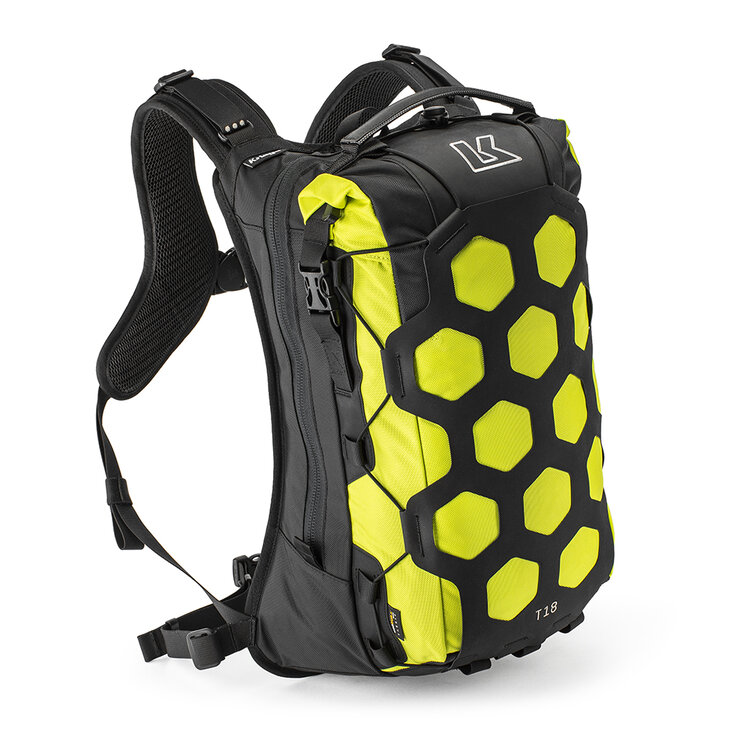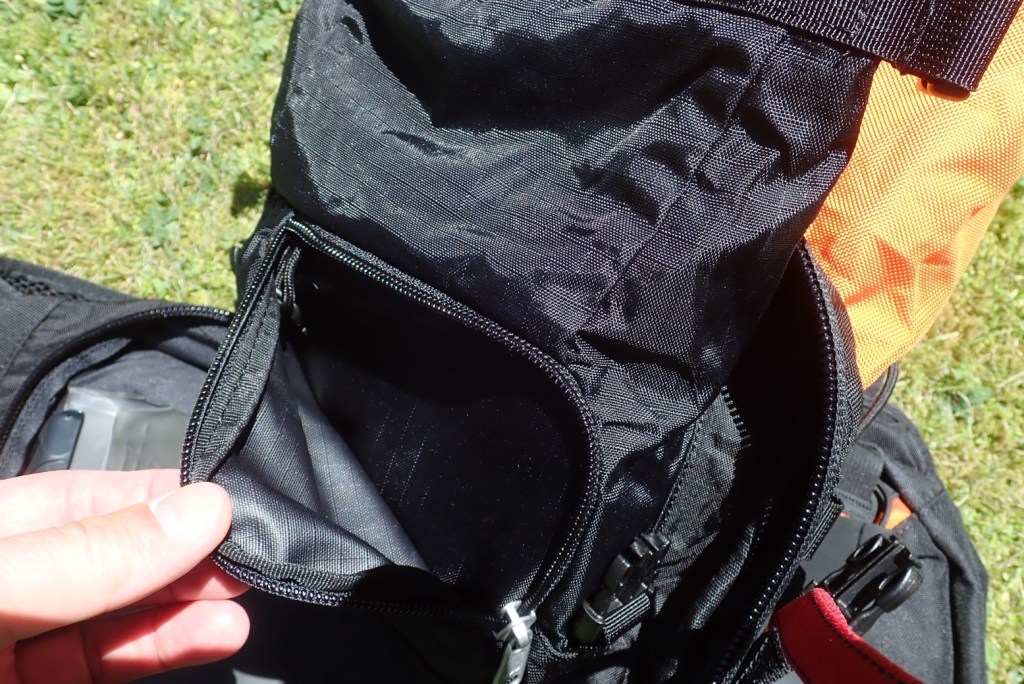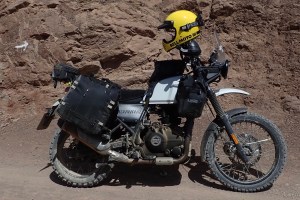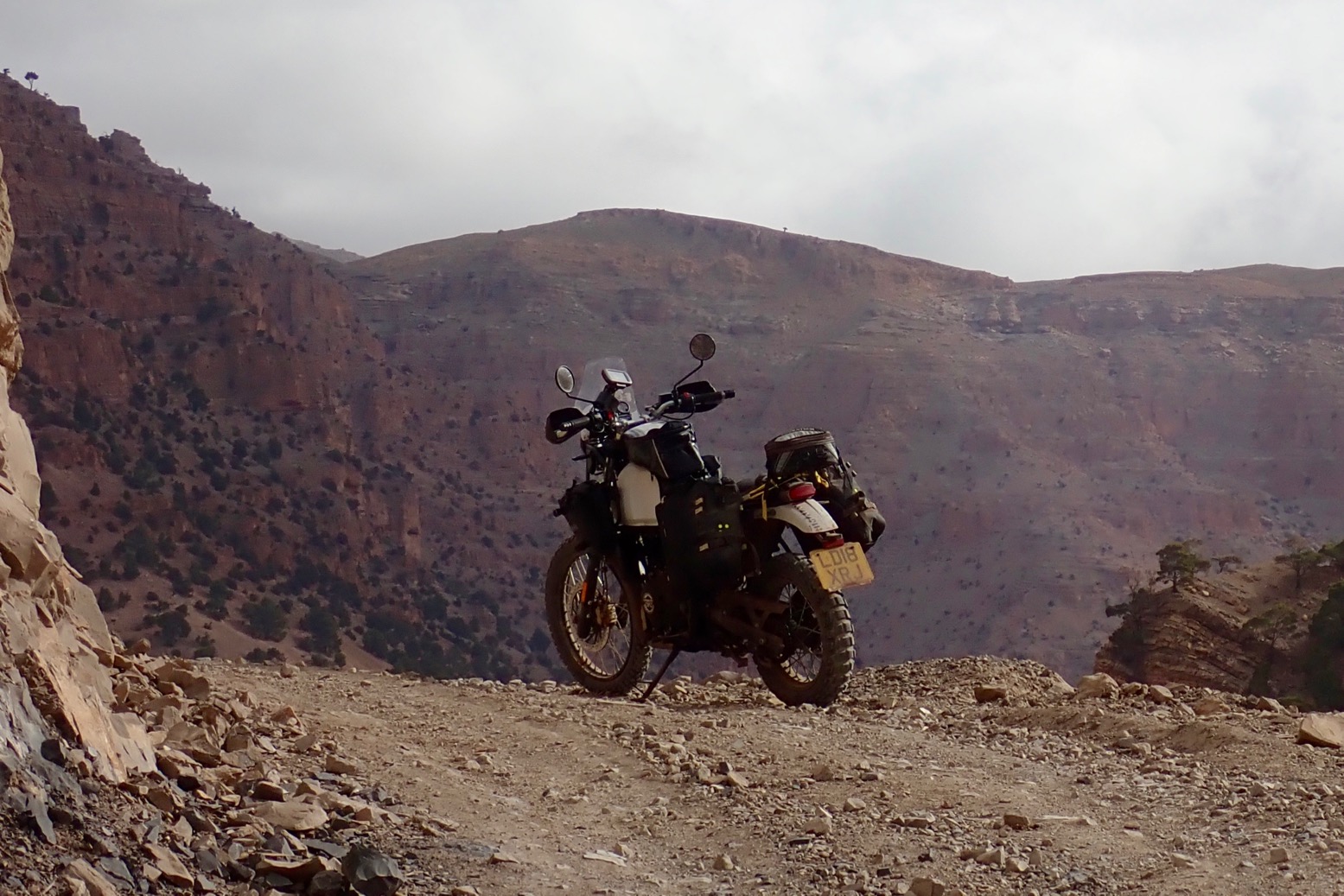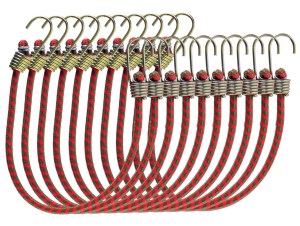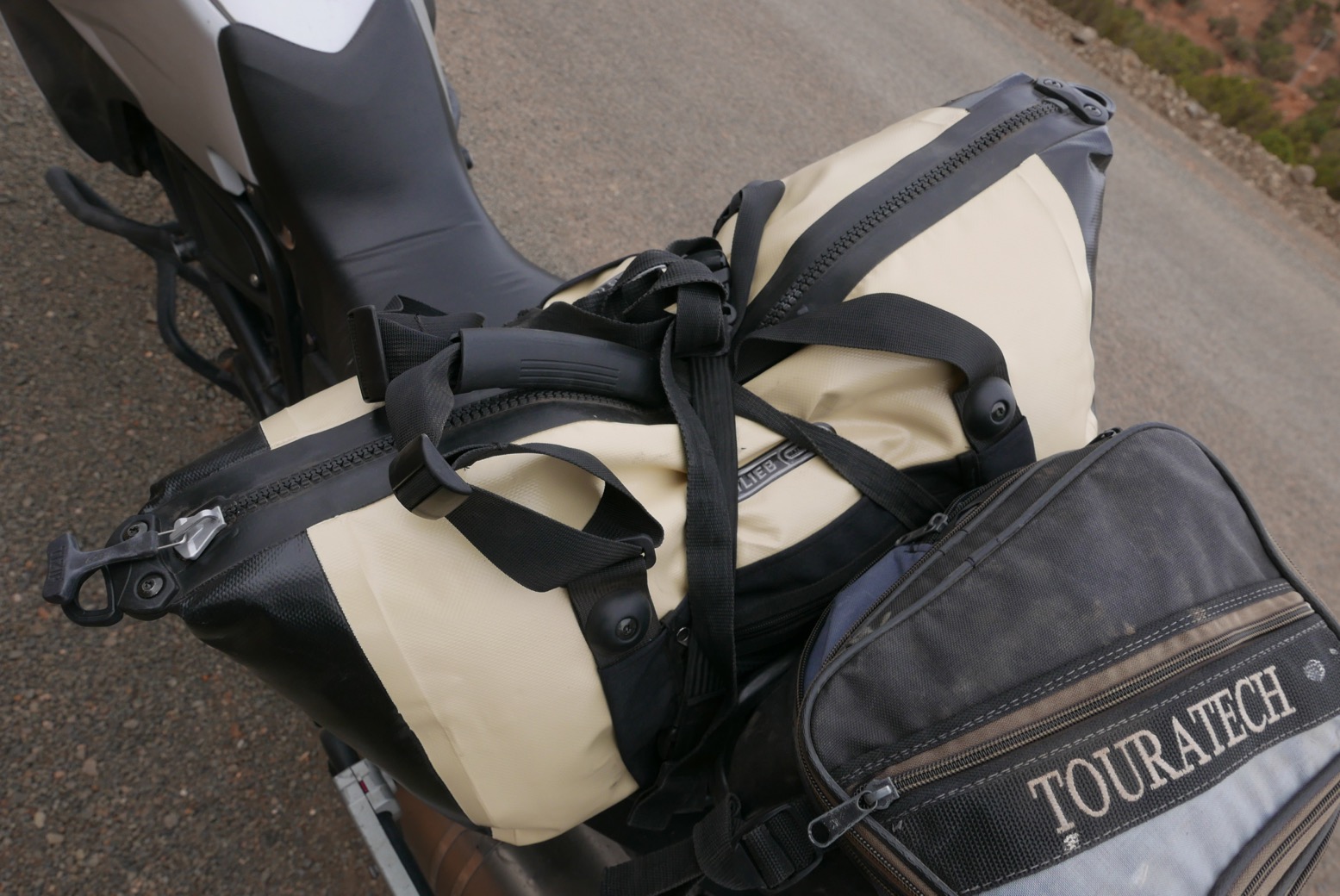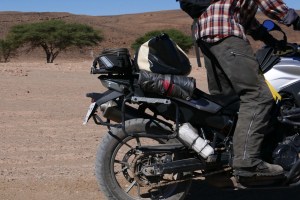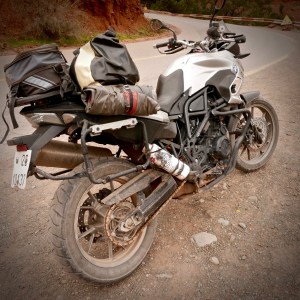
New daypacks join Kriega’s long-established five-strong R range from 15 to 35 litres. You got the snazzy colour-backed Trail in 9 and 18-litres and the bigger more urbanesque Max 28 which expands to take a helmet.

Supplied free for review and testing
What they say
The TRAIL18 Adventure Backpack utilises Kriega’s groundbreaking Quadloc-Lite™ harness, combined with high-tech construction materials to meet the needs of the adventure rider.
Composed of three sections: A heavy-duty zip access 7-litre rear compartment which is a perfect storage area for a Tool-Roll and water bottle or the optional 3.75L Hydration Reservoir. This area also has a small internal waterproof pocket for a phone and wallet, combined with the main roll-top body providing a total of 12-litres 100% waterproof storage. The innovative Hypalon net also provides more external storage for wet gear.
What I think:


• Roll-top compartment
• Comfortable to wear; sits well on the back
• Removable waist straps (never used)
• No compression straps
• Durable 420D Cordura body
• White waterproof liners in two compartments
• Hydrator-ready
• External hypalon net
• Smooth-gliding main zipper
• Colour-backed Trails aid visibility
• 10-year guarantee
• Bulky roll-top small inner pouch
• Expensive
• Quadlock-Lite interferes with jacket pocket access
• Weighs in at over 1.7 kilos with the hydrator
Review
For years I’ve been happy enough with my dinky R15, once I cut off the unneeded compression straps and removed the unnecessary waist strap. I’ve used it for weekends in Wales, backroads and tracks in the Colorado Rockies and Baja, and of course on my Morocco tours and rides. The main compartment was big enough for my laptop in a dry bag plus the hydrator, with bits and pieces in the PVC mesh inside pocket and the bigger outer pocket.

The longer Trail18 will be a nifty replacement. Straight away I like the coloured back panel. Often on my tours I try to ID riders up ahead, and anything non-black makes it a whole lot easier. I dare say it will be for them to spot me with an orange pack too.
You often get those thin bungy elastic laces across daypacks as a quick and easy place to stash stuff. Kriega have thought it through a bit further by using a distinctive hypalon net panel with the elastic strung along the edges and attached closely at the base. This way, whatever you stuff in there – mucky bottles, baguettes, wet cloths – won’t fall out the bottom. And if you want more colour or don’t like this arrangement, you can easily unlace the elastic and remove the hypalon panel.
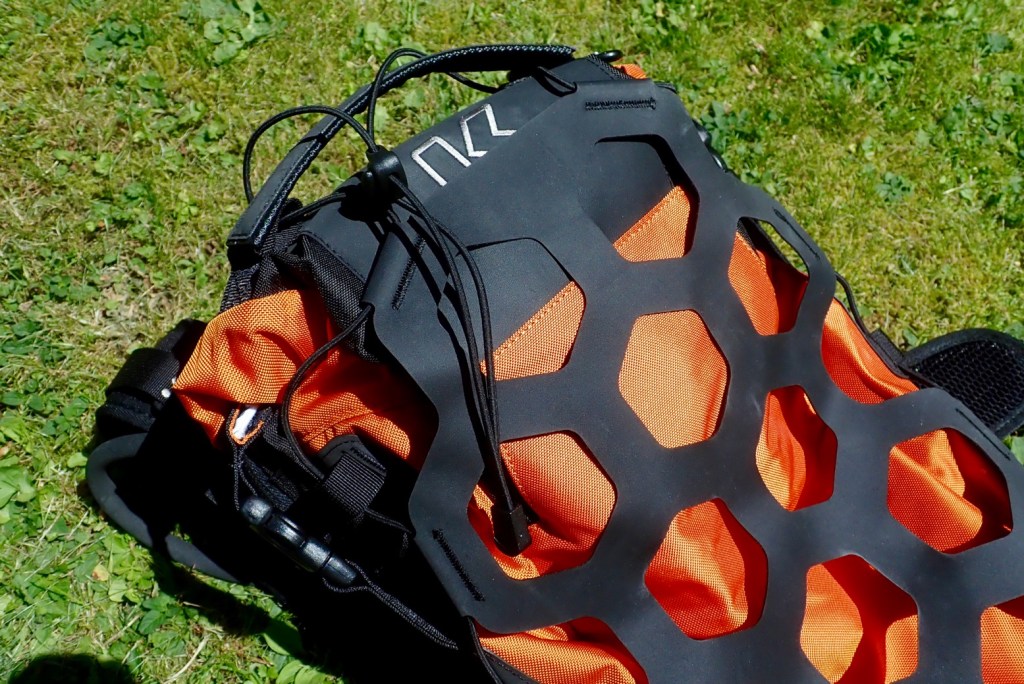
I can see a use for this feature buying some food on the way to a night’s lodging, or securely stuffing a jacket or overpants in there on a hot day when you don’t want to dick about with the closures. It’s possible the excess elastic and cinch fittings above may flap about in the wind behind you, but tucking the end in is easy enough.

Behind this panel is a full-length 11-litre compartment with a removable white waterproof liner and a clip-down roll-top. The great thing with roll-tops is that even if you forget to do them up, stuff stays in. No more clattering laptops on leaving airport baggage scans with unzipped zips.
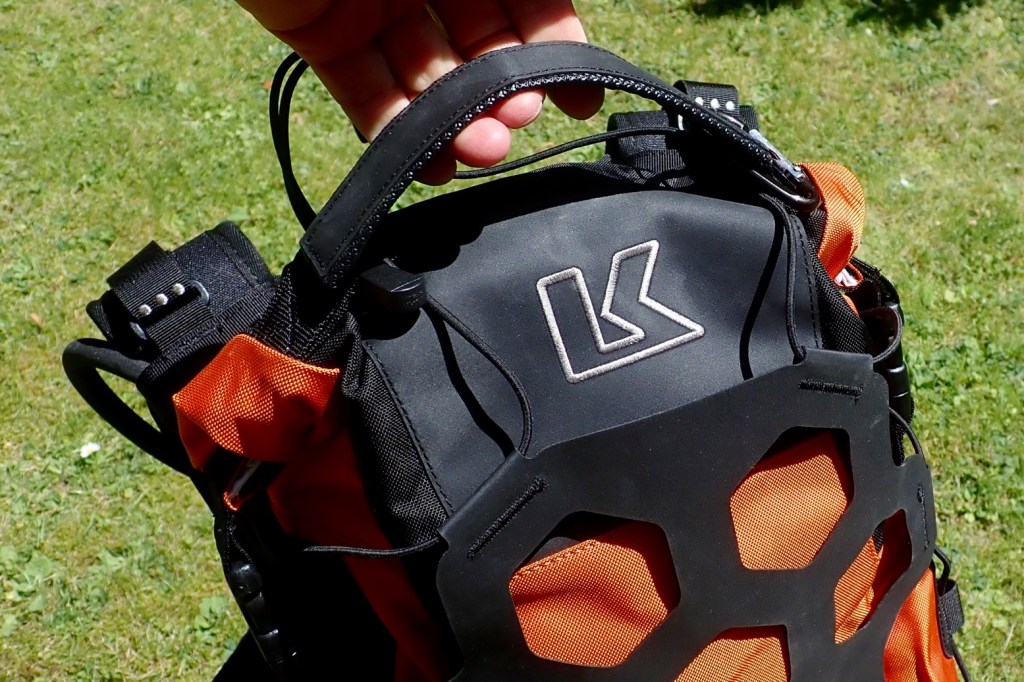
Behind that compartment against your back is a smaller 7-litre zipped compartment with no liner. Inside are a couple of tabs to hook up your hydrator (more below) and down below a couple of sleeves for drinks cans or 500ml water bottles. A smooth-running (non water-resistant) one-way zipper only comes right down on one side (below) so forgetting to do it up ought not see things fall out so readily. It includes a finger-hooking ring pull which can only be in one place when closed, but I always add a bit of bright tape to make this puller easier to locate.
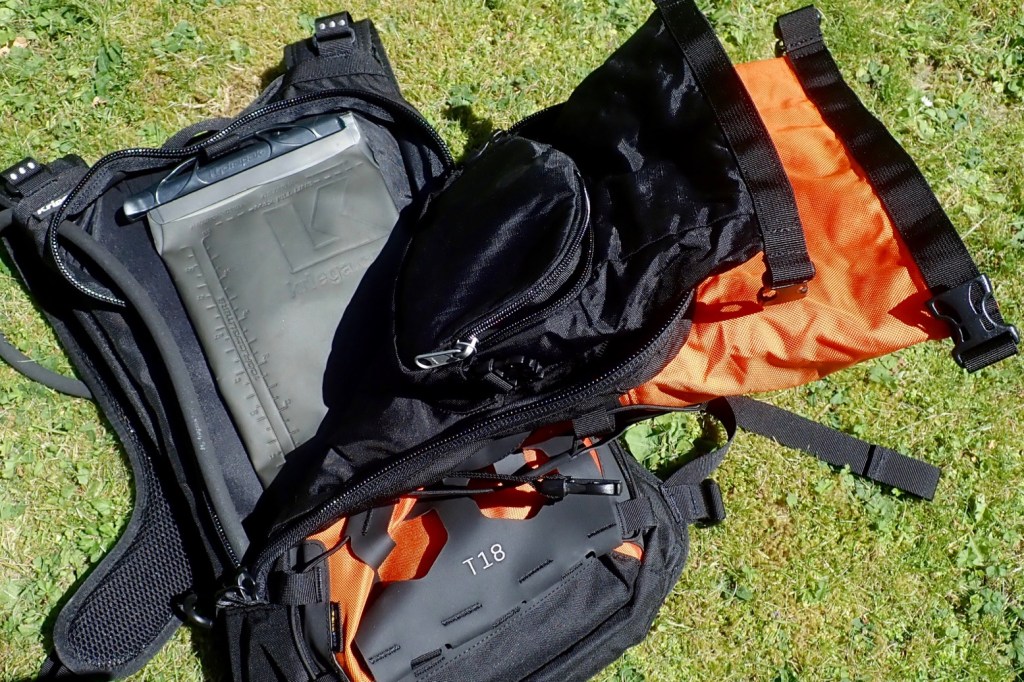
My only mild gripe with the Trail is the bulkiness of the roll-top/clip-down waterproof liner’d 1-litre pouch with a phone-sized zip pocket attached in the inner compartment. I know it’s waterproof but the roll-up takes a lot of space and clipping it down would be a faff. I’d have preferred a bigger version of the plastic ripstop zip pocket from the R15. But then again, you can easily drop a big camera in here and be reasonably sure it will stay dry.
After a year I chopped off that pocket’s roll-up sleeve, taped it up and cut a hole behind the zip to access the pocket without losing any volume.
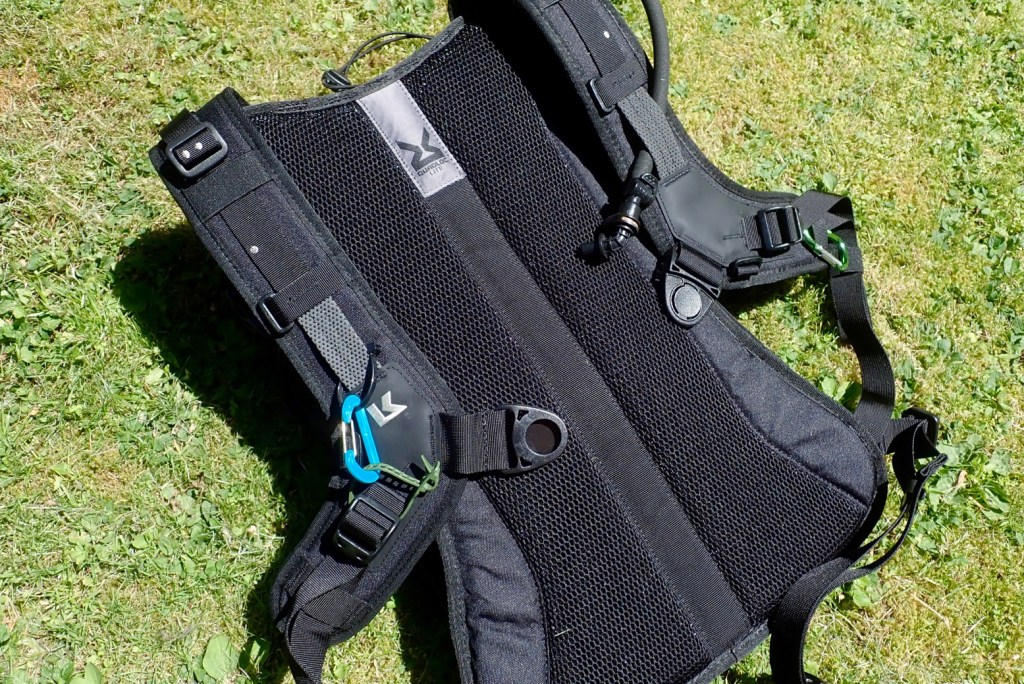
The long mesh-padded back panel seems stiffer than my old R15 so the whole thing doesn’t rest quite so unobtrusively on your back, which may actually be a good thing. The waist strap can be removed and there’s also a door hook tab plus a chunky carry handle. On the front are loops to clip in mini karabiners for quickly attaching stuff like hats or Kriega accessory pouches. I zip tie a small camera case on there for quick access.
My Trail18 weighed in at 1550g and costs £179.

The Trail is hydrator-ready with a slot for the hose to come over either shoulder and a velcro tab inside the back from which to hang the bladder.
Kriega’s stubby new 3.75L (7.9 pint!) Hydrapak Shape-Shift reservoir is made to fit both Trail models by fully expanding to fill the space below that bulky top pocket.
Nearly 4 kilos of water is a lot to carry on your back, but maybe that’s what some riders need. The rubbery TPU bladder has an easy-to-use and reliable fold-and-clamp closure with a big aperture which makes it easy to fill and clean/dry the inside, as well as the clip-on, insulated and UV-proof hose with hopefully a less-brittle bite-valve on the end. I tucked my nozzle end under a tab on the front of the strap, but Kriega offer a velcro attachment tab which may well work better if the hose is on the short side for you. It costs £45.

